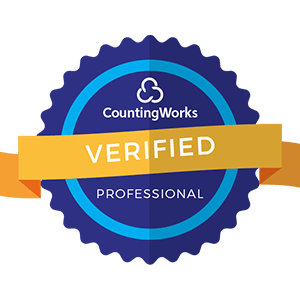
Let's face it: running a small business can feel like trying to juggle flaming torches while riding a unicycle. On a tightrope. Over a pit of alligators. In other words, it's stressful. But here's the kicker: your stress isn't just your problem. It's contagious, and before you know it, your entire team is caught in a stress spiral that can tank productivity, crush creativity, and send your best talent running for the hills.
But don't panic! (That would be, you know, stressful.) We've got your back with a guide to creating a zen-like oasis of calm in your small business—without breaking the bank. So take a deep breath, release that tension in your shoulders (you know it's there), and let's dive into the world of budget-friendly stress busters that will have your team feeling cooler than a cucumber in a freezer.

Before we jump into our stress-busting strategies, let's talk about why this matters. Stress isn't just an annoying part of work life—it's a full-blown epidemic that's costing businesses big time.
The Shocking Stats:
Yikes, right? But here's the thing: as a small business, you might think you can't afford to focus on stress management. The truth is, you can't afford not to.
Now, before you start feeling even more stressed about stress, here's some good news: as a small business, you actually have some unique advantages when it comes to creating a low-stress environment.
So, ready to turn your small business into a stress-free zone (or at least a less-stressed zone)? Let's dive in!
Mindfulness isn't just for yoga studios anymore. It's a powerful tool for reducing stress, increasing focus, and boosting overall well-being. And the best part? It doesn't cost a dime.
Pro Tip: There are tons of free mindfulness apps out there. Some favorites include Insight Timer, Smiling Mind, and UCLA Mindful.
The Science Behind It: A study published in the Journal of Occupational Health Psychology found that mindfulness-based interventions in the workplace can lead to significant reductions in emotional exhaustion (a key component of burnout).
Remember recess? Turns out, it wasn't just for kids. Getting outside during the workday can be a powerful antidote to stress.
Mind-Blowing Fact: A study in the International Journal of Environmental Research and Public Health found that just 20-30 minutes in nature can significantly lower stress hormone levels.
They say laughter is the best medicine, and when it comes to stress, they're not wrong. Bringing more humor into your workplace can lighten the mood and reduce tension.
Did You Know? Laughter increases the release of endorphins, your body's natural feel-good chemicals. It's like a free drug that's actually good for you!
Gratitude isn't just for Thanksgiving. Regular expressions of gratitude can significantly reduce stress and increase job satisfaction.
Science Says: A study in the Journal of Personality and Social Psychology found that keeping a gratitude journal led to higher levels of alertness, enthusiasm, determination, attentiveness, and energy.
One of the biggest sources of workplace stress is feeling a lack of control. Offering flexibility can be a powerful way to combat this.
Food for Thought: A study by the American Psychological Association found that 76% of workers who have the option to work flexible hours report good work-life balance, compared to 62% of those who don't.

Health and stress are intimately connected. By promoting wellness as a team, you can create a culture of health that naturally reduces stress.
Pro Tip: Many health insurance providers offer free wellness programs. Check with your provider to see what resources are available to your team.
Creativity isn't just for artists. Engaging in creative activities can be a powerful way to reduce stress and boost problem-solving skills.
Creativity Catalyst: A study in the Journal of Positive Psychology found that engaging in creative activities contributed to an "upward spiral" of positive emotions and greater flourishing in life overall.
Who says work and play don't mix? Incorporating elements of play into your workday can reduce stress, boost morale, and even increase productivity.
Mind-Bending Stat: According to a study by BrightHR, 79% of employees believe that play is important in helping them be more productive at work.
In our often extrovert-centric work culture, introverts can experience additional stress. Creating quiet spaces and opportunities can help all personality types thrive.
Introvert Insight: According to Susan Cain, author of "Quiet: The Power of Introverts in a World That Can't Stop Talking," introverts make up one-third to one-half of the population. That's a lot of people who might be stressed by constant collaboration!
Often, stress builds up when people feel unheard or unsure about their performance. Creating open channels for feedback can alleviate this stress.
Communication is Key: A study by the American Psychological Association found that employees who feel they have a voice in the workplace report lower levels of stress and higher job satisfaction.

Now that we've explored these stress-busting strategies, it's time to put them into action. But remember, trying to implement everything at once might be, well, stressful. Instead, try this step-by-step approach:
Before you start implementing solutions, get a clear picture of the current stress levels in your team. This could be as simple as an anonymous survey asking team members to rate their stress levels and identify major stressors.
Based on your assessment, choose 2-3 strategies that seem most relevant to your team's needs. Remember, you can always add more later.
Involve your team in the process. Present the strategies you're considering and get their input. When people feel involved in the solution, they're more likely to participate enthusiastically.
Begin with small, manageable changes. For example, if you're implementing mindfulness, start with just one minute at the beginning of team meetings.
Whatever strategies you choose, commit to them for at least a month. It takes time for new habits to form and for people to start feeling the benefits.
After a month, reassess. What's working? What isn't? Be prepared to tweak your approach based on feedback and results.
Here's the really cool thing about implementing these stress management strategies: the benefits go way beyond just reducing stress. You might notice:
As a leader, your role in creating a low-stress environment is crucial. Here are some key things to remember:
In the world of small business, stress might seem like an unavoidable part of the package. But with these strategies, you can create a work environment that's not just less stressful, but more productive, more creative, and more enjoyable for everyone.
Remember, managing stress isn't a one-time event—it's an ongoing process. But with consistency and commitment, you can transform your workplace into a haven of productivity and well-being. And the best part? You don't need a giant corporate budget to do it.
So, take a deep breath, pick a strategy, and take that first step towards a less stressed, more successful small business. Your team (and your blood pressure) will thank you.
Final Thought: In the words of Hans Selye, the pioneering stress researcher, "It's not stress that kills us, it is our reaction to it." By implementing these strategies, you're not just reducing stress—you're changing your team's entire relationship with it. And that, dear small business leader, is priceless.
Now go forth and destress! Your zen-like oasis of small business success awaits.


